 |
Sporobolus heterolepis |
Prairie Dropseed |
Prairie dropseed is a native grass that ranges from Texas to Canada. Indigenous people made flour from this grass by grinding the seeds. |
 |
Salvia leucantha |
Mexican Bush Sage |
Mexican bush sage is not native to Texas native but has been naturalized to our area. This sage is drought resistant and is a great choice for gardeners wanting to conserve water. |
 |
Salvia greggii |
Pink Autumn Sage |
A Texas native that can be found in a wide range of colors. It is a very popular plant with hummingbirds. |
 |
Bouteloua curtipendula |
Sideoats Grama |
Sideoats Grama, is the state grass of Texas and important for native wildlife. Birds love the seeds, and the grass is the host plant for at least five species of the skipper butterfly. |
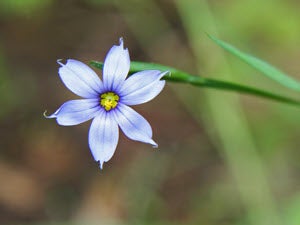 |
Sisyrinchium angustifolium |
Blue-Eyed Grass |
Blue-eyed grass is a Texas native species that is in the lily family and not a true grass! |
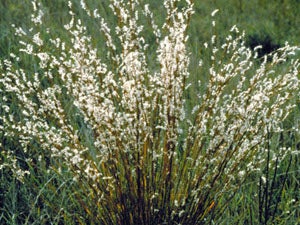 |
Schizachyrium scoparium |
Little Bluestem |
One of our region’s most important, native prairie bunchgrasses! It is the host plant for several species of skipper butterflies. |
 |
Nyssa sylvatica |
Black Gum |
Black gum trees are found in wet, woodland areas. The genus name refers to the water nymphs of Greek mythology. |
 |
Penstemon cobaea |
Prairie Penstemon |
Prairie penstemon is an important native nectar plant for numerous species, including native bees and moths. |
 |
Lantana montevidensis |
Trailing Lantana |
Trailing lantana is native to South America but naturalized to Texas. Pollinators love the flowers but the hairs on the leaves can cause a rash on some people. |
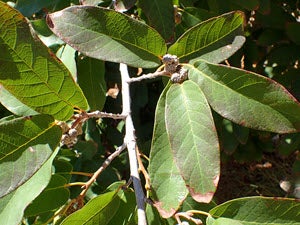 |
Quercus polymorpha |
Monterrey Oak |
An evergreen species of oak whose current, wide-spread use in Texas horticulture can be attributed to Lynn R. Lowrey. |
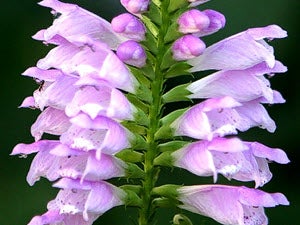 |
Physostegia virginiana |
‘Miss Manners’ Obedient Plant |
This native plant loves acidic, well-drained soil; however, will “flop” in rich soils and in hot temperatures. The “Miss Manners” variety is less prone to this flopping. |
 |
Poliomintha longiflora |
Rosemary Mint |
Native to Mexico, this plant has adapted to Texas and is also known as Mexican Oregano! |
 |
Carex texensis |
Texas Sedge |
One of the most common, native sedges in Central Texas. Sedges are in the same plant family as cypress trees! |
 |
Scutellaria suffrutescens |
Mexican Scullcap |
A native to Mexico, this plant is also known as “Texas Rose.” Lynn R. Lowrey originally collected this plant near Monterrey, Mexico. |
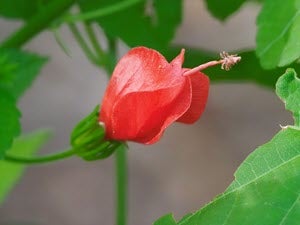 |
Malvaviscus arboreus var. drummondii |
Turk’s Cap |
A native plant that is the favorite of hummingbirds. The species is named after Thomas Drummond, a Scottish botanist that explored the southern U.S in the 1830s. |
 |
Thelypteris kunthii |
Wood Fern |
A native fern found in, woodlands and steam banks. It spreads easily by rhizomes, or underground stems. |
 |
Phyla nodiflora |
Texas Frogfruit |
A fantastic native ground cover that is the host plant for the Phaon Crescent butterfly. |
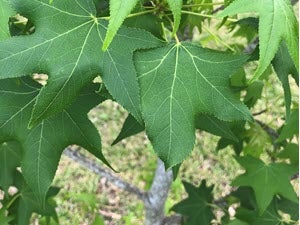 |
Liquidambar styraciflua |
Sweetgum “slender silhouette” |
Sweetgums exhibit explosive, fall colors and this variety is “slender” due to the tight growth of the branches to the tree’s trunk. Indigenous people used the rosin (sap) as chewing gum. |
 |
Echinacea purpurea |
Purple Coneflower |
Echinacea tea is popular across the world. Compounds in the flowers are reported to boost the immune system. |
 |
Rivina humilis |
Pigeonberry |
A Texas native plant whose berries are loved by many species bird species. The berries are slightly toxic to humans, so please, no snacking! |
 |
Oenothera lindheimeri |
‘Sparkle White’ Gaura |
A native plant that is easily distinguished by four, upright petals; however, they readily hybridize so it is difficult to identify ID individual species. |
 |
Pinus taeda |
Loblolly pine |
This species has the fastest growth rate of all pines. In 2016, Rice planted a “half-moon” loblolly pine near Main Street. This tree is the offspring of a loblolly that was germinated from a seed flown on the Apollo 14 moon mission. |
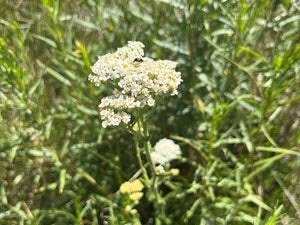 |
Achillea millefolium |
Common Yarrow |
A native plant, however, the cultivated form of this species is usually a hybrid. Yarrow has been used globally by humans for its medicinal properties. |
 |
Carex cherokeensis |
Cherokee Sedge |
One of the tallest, species of native sedge in our region. It is the host plant for the satyr butterfly. |
 |
Conoclinium coelestinum |
Blue Mistflower |
The blue mistflower is a very important native plant for multiple species of bees! |
 |
Taxodium distichum |
Bald Cypress |
Bald cypress trees are the only native cypress in North America. They can also be observed on Rice’s campus near the Harris Gully Natural Area, which is part of the Lynn R. Lowrey Arboretum. |
 |
Teucrium canadense |
American Germander |
The most common native, germander. This plant is in the mint family whose members can be identified by their square stems. |



























